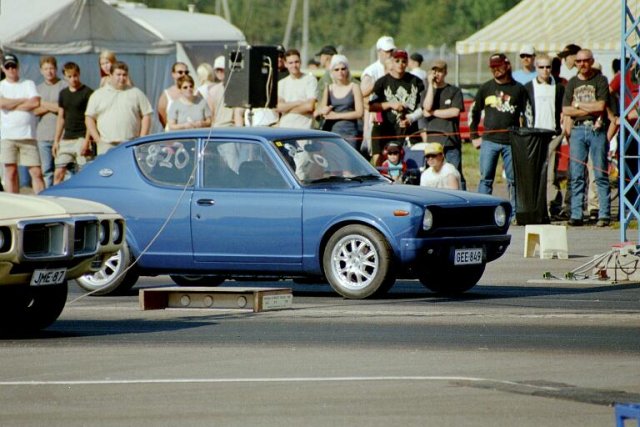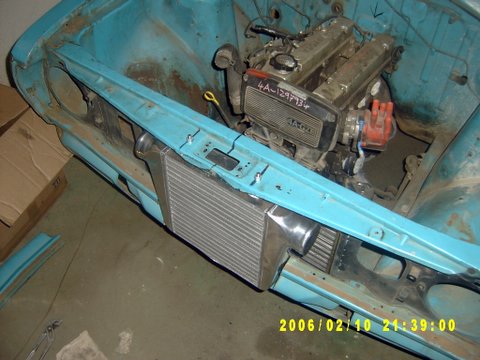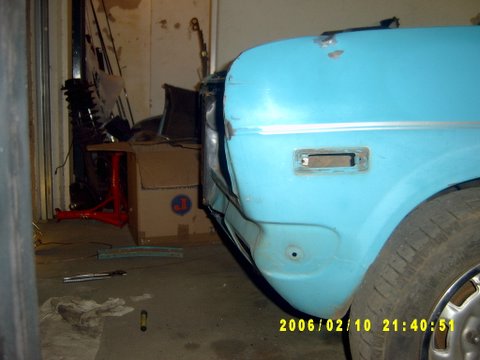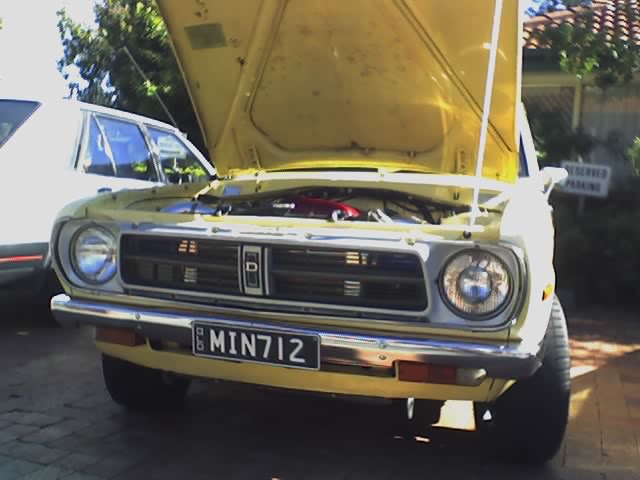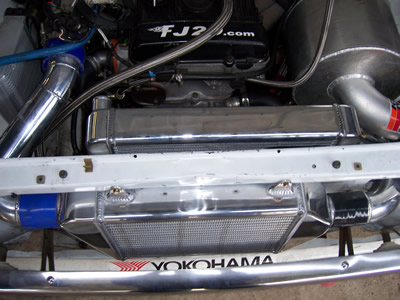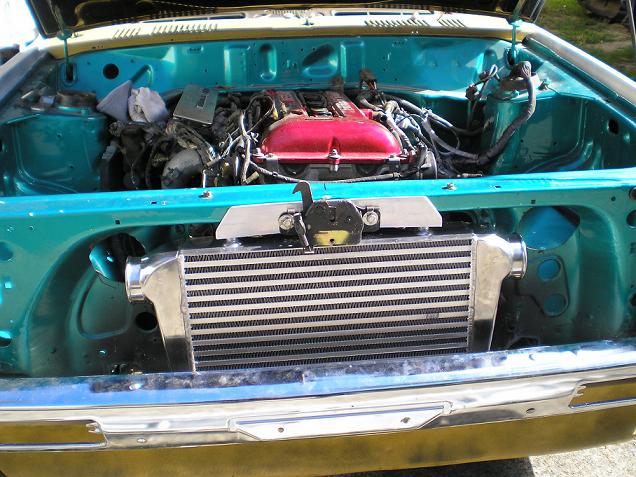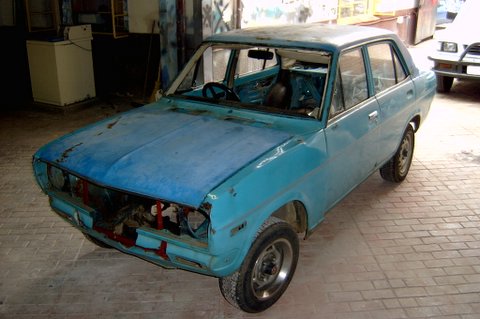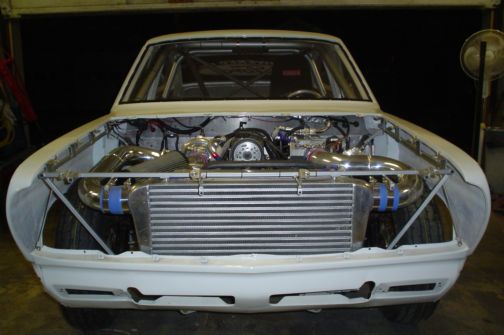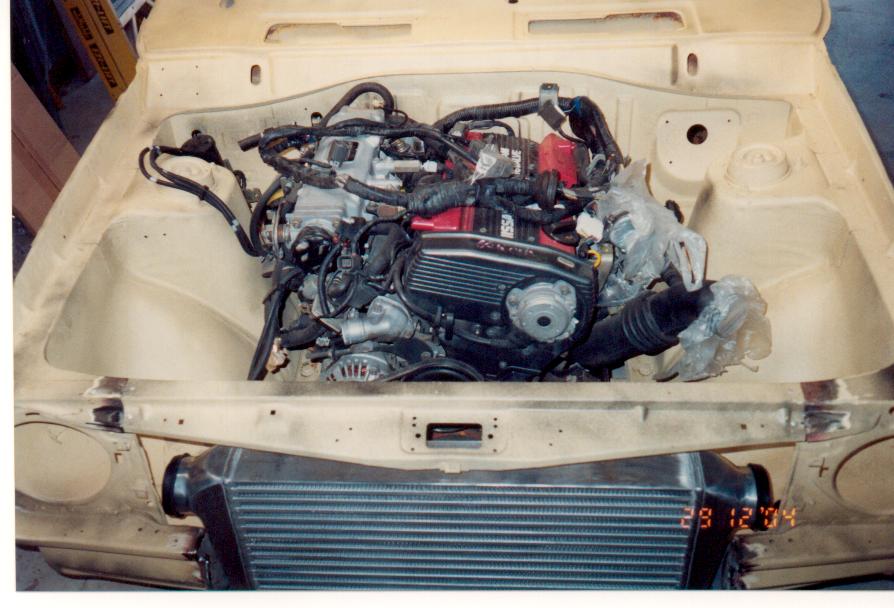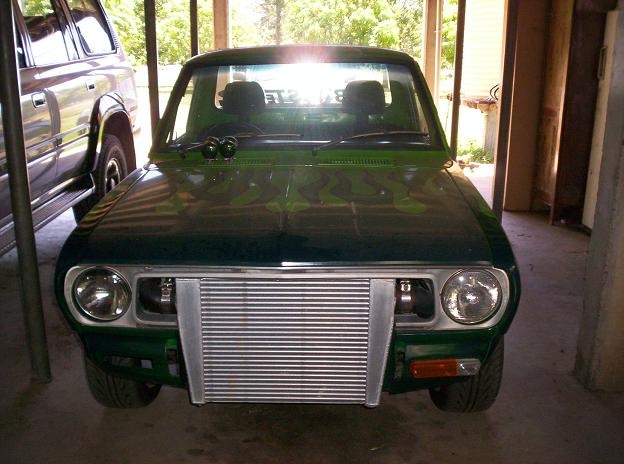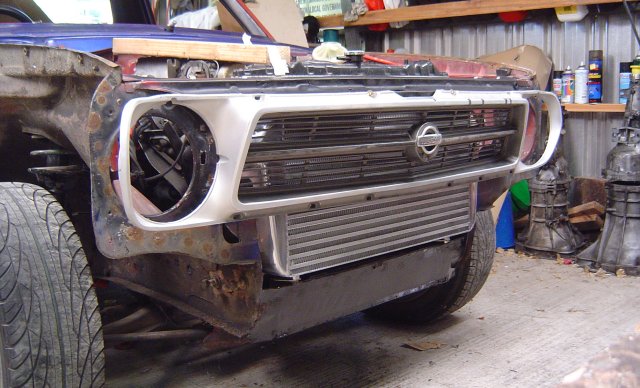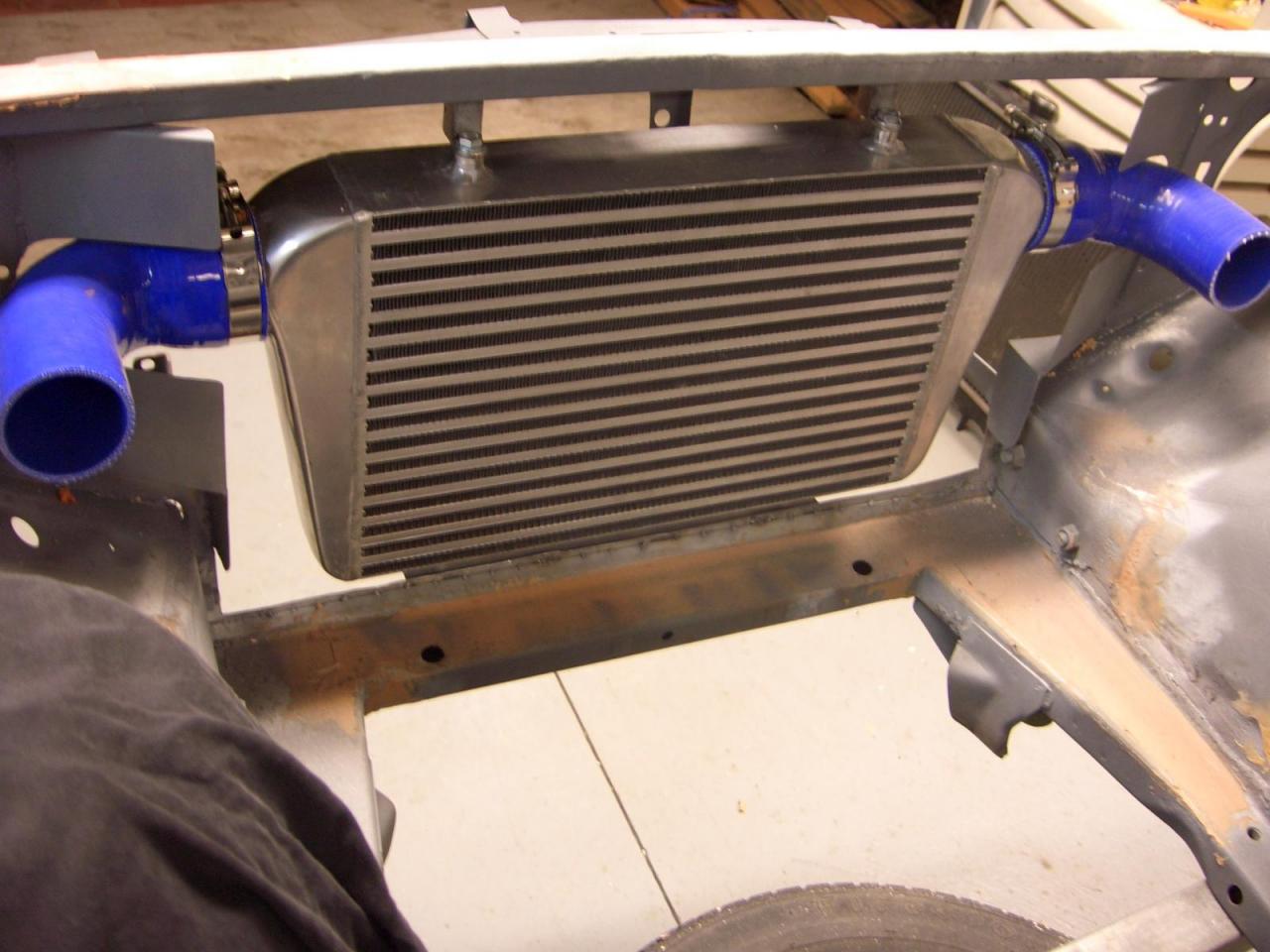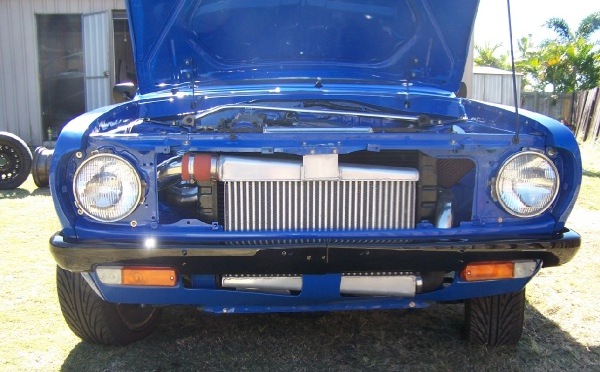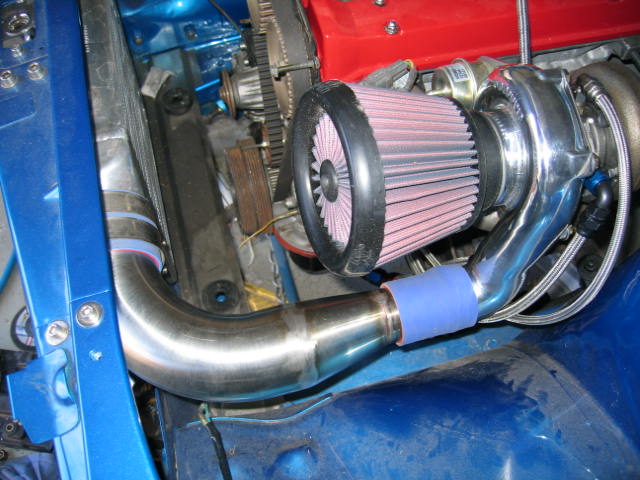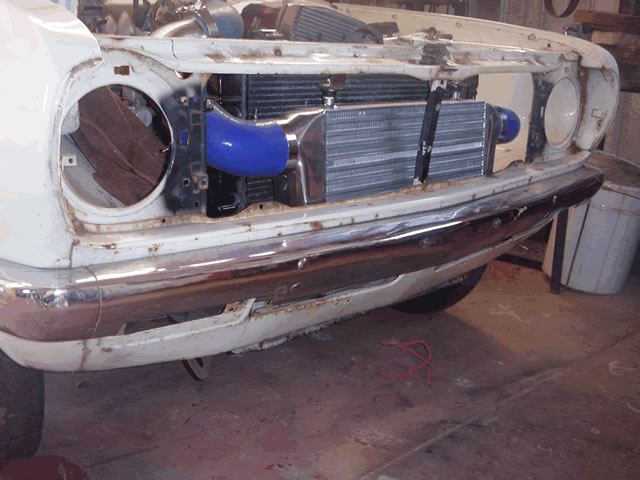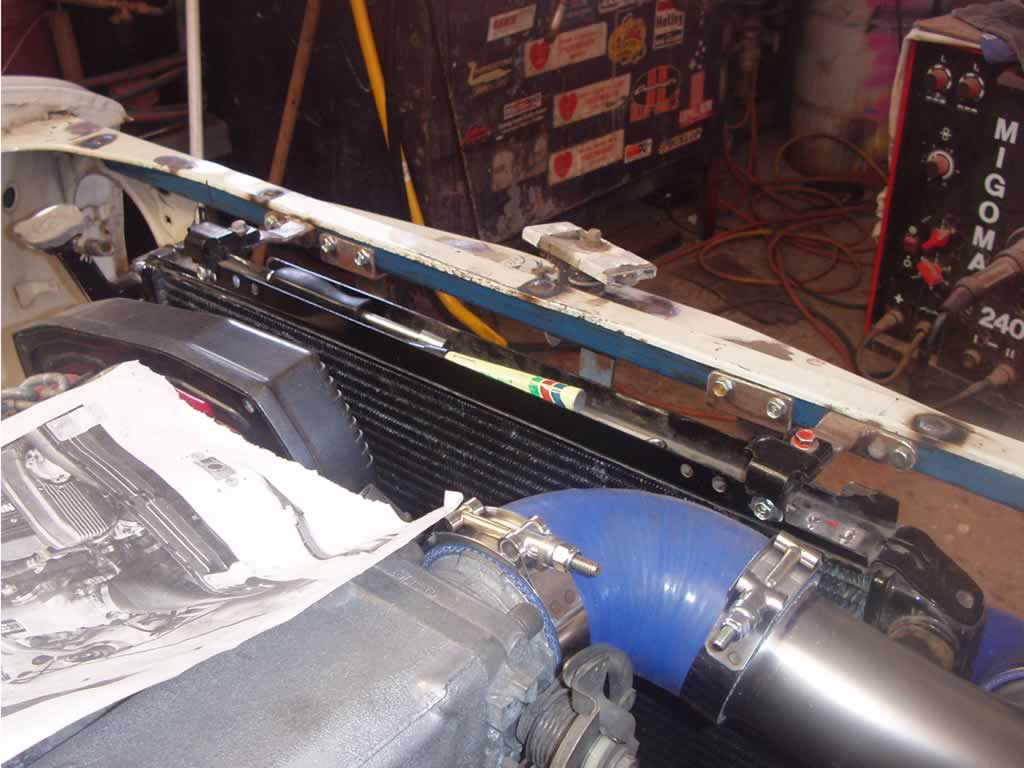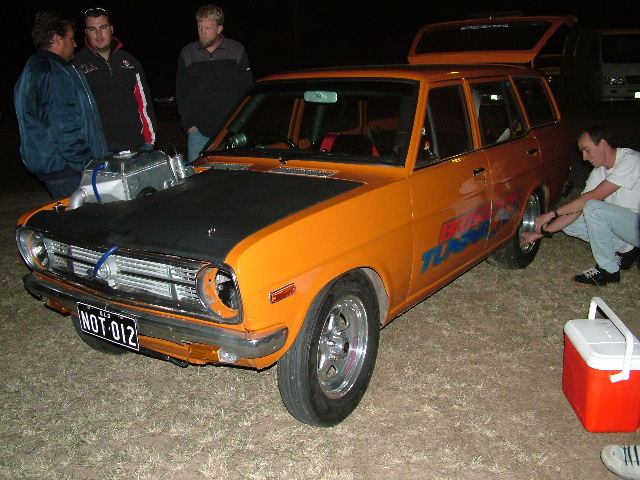<-- Back to Turbo systems
By keeping the air cool and therefore dense, an intercooler will allow the boosted engine to make far more horsepower. Because the air is not overheated, more spark advance can be applied for more HP. Because the air is dense, more packs into the cylinders (air mass) which means more HP. And more boost can be applied before the knock index of the fuel is reached. More boost = more power.


Contents |
Overview
An Intercooler is not needed, for example the first three years of the Porsche 911 Turbo didn't have one (1975-1977) and still this 3.0 liter turbo outperformed 7.5 liter NA cars.
An intercooler can result in far more HP, but requires a blow-through system (boxed carburetor) or EFI port injection. This is because for safety you don't want air-fuel mixture going through the cooler, where it will condense out of the airstream and result in fuel puddles in the cooler!
Even so, intercooler is worth the extra cost and complexity, because it significantly reduces the temperature of the compressed air, which increases the boost possible with a given octane fuel. So basically, for a modest up-front cost, you gain additional horsepower forever after.
An alternative to the intercooler is to use water or alcohol injection. Some OEM applications used water injection (ex. 1962 Oldsmobile Jetfire which was a 10:1 V8 turbo).
NOTE: intercooler should not be used with a draw-through carburetor system. Instead, use #Water Injection
Can you re-purpose a car radiator and use it as an intercooler? Using an aluminum radiator should be better than nothing. Unless someone actually tested this, we are all just guessing as to whether it will work or not. Radiators can flow a lot of water, and air is easier to pump ... so air should flow through w/o significant restriction. Putting this in front of the car should allow some cooling effect, although obviously not as a much as a purpose-designed cooler.
Nissan GTiR factory-style intercooler (top mount) | Traditional in-front-of-radiator intercooler
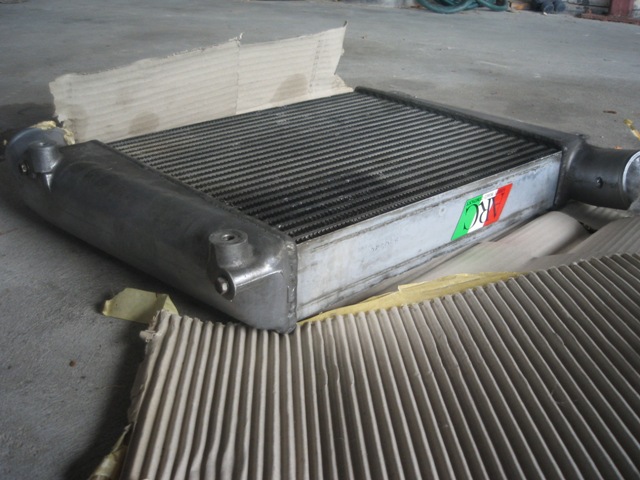

Sleeper 120Y has intercooled FJ engine

Front Mount
FMIC (front-mount intercooler)
Traditional in-front-of-radiator intercooler

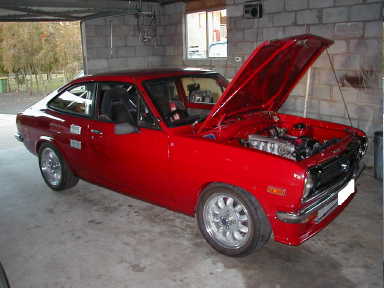
Front External
For that bulldog look.
Small Front Mount
Smaller intercoolers fit between the grille and the radiator for a sleeper look. 26" x 9" x 2.5" which is almost the max size you can go without cutting a lot.
Large Front Mount
For large intercoolers a section of the radiator core support is cut out

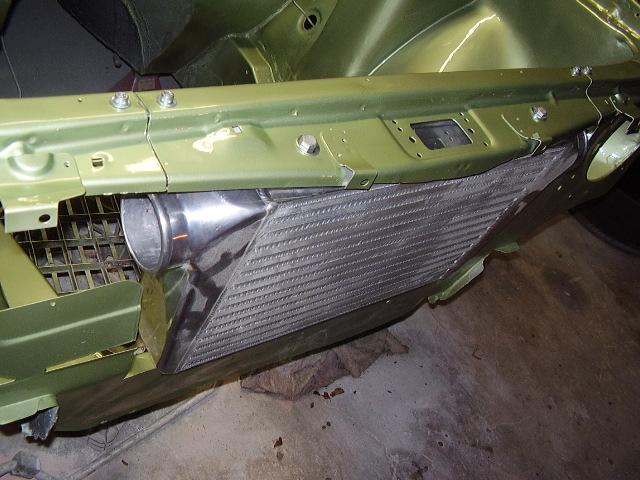 Finished off -- large intercooler hidden
Finished off -- large intercooler hidden

A lot can be cut out to fit gargantuan intercooler
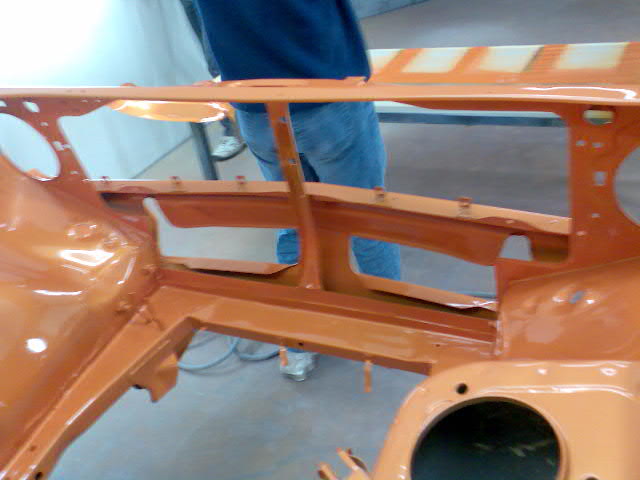
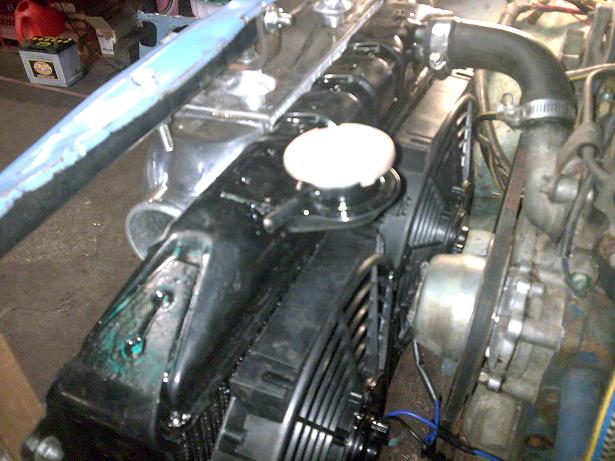

120Y grille modded to accept intercooler

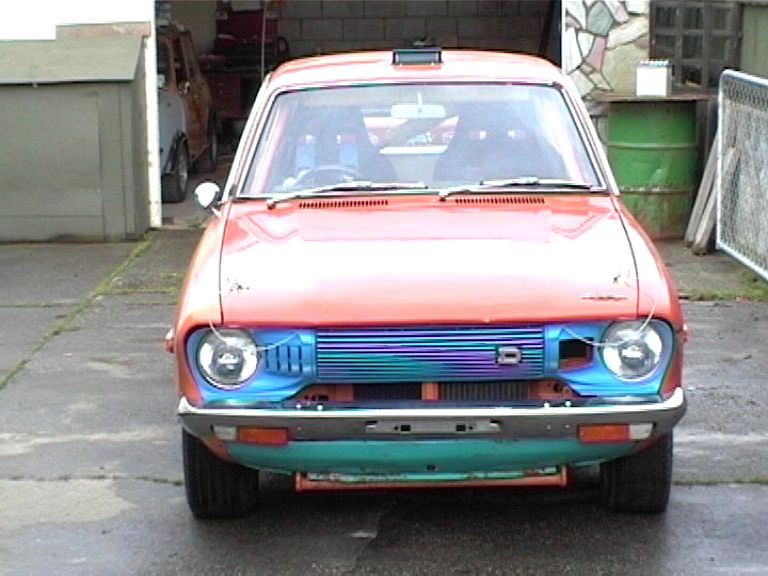
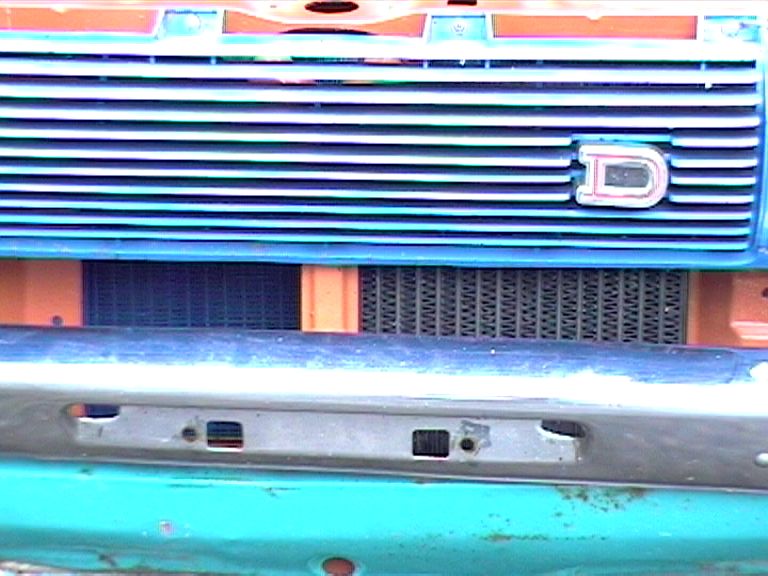
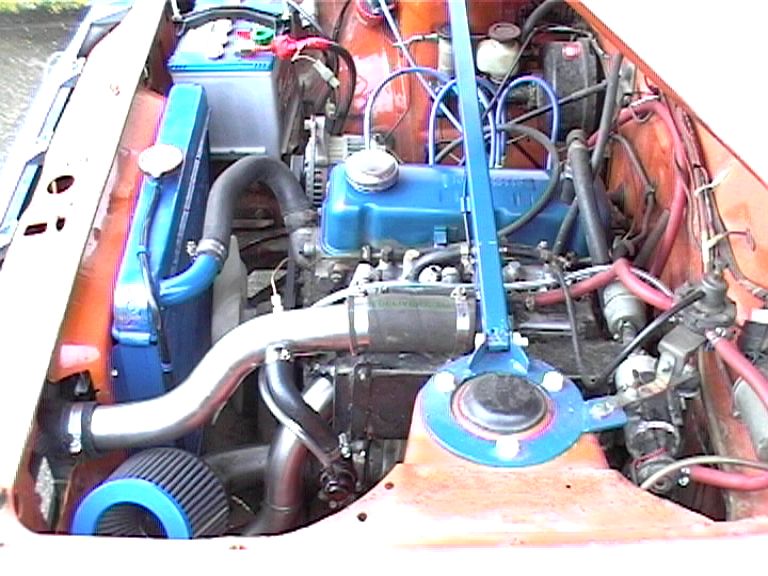
Airbox Tubing
Turbo Tubing
Top Mount
Nissan GTiR factory-style intercooler

Top-mount Subaru Forester intercooler



![[Datsun 1200 encyclopedia]](/wiki/upload/wiki.png)




